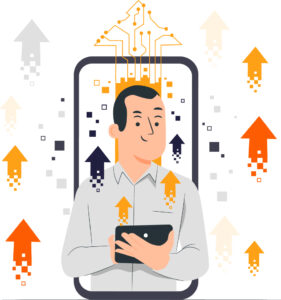
Tax Compliance with HRIS: What You Need to Know
Tax compliance with HRIS will surely lessen your burden during tax season by streamlining your processes. Read to know how!
Business owners and leaders in the Philippines are recently looking for digital transformation examples for their micro, small, and medium enterprises (MSMEs). The interest was sparked mainly by a 2021 Google report which revealed that the country can unlock P5 trillion in economic value by fully embracing digital technologies.
However, a major challenge was pointed out: digital adoption is quite low among SMSEs, the sector which makes up 99.51% of businesses in the country.
Is your business among the 90% whose digitalization levels are either ‘basic’ or ‘intermediate’, according to the report? Take heed as in this article, we’ve identified five companies whose digital transformation can inspire you. Before we proceed with the examples, let’s make sure that we’re on the same page when it comes to key terms and concepts.
Keep in mind its purpose. We ‘digitize’ things that we need our digital devices to work on.
Digitalization, therefore, is simply improving the way we work. We do this through digitized information, as well as digital tools and technologies.
Let’s stay with our previous example. You’ve realized that your digitalized customer records management now provides a wealth of information to propel your business. With the right software and devices, you can automate workflows related to customer service, sales, marketing, product development, and others.
You see the immense benefits that this new prospect brings. However, the whole organization must first become a digital powerhouse. It needs to undergo digital transformation.

We can better understand what digital transformation is all about through real-life examples that MSMEs can get inspiration from.
ASA Philippines is a non-stock, non-profit corporation that specializes in microfinance. In our previous blog, we discussed how a cloud-based system worked wonders for them.
Their major problem: it takes one month to collate data from their 1,150 branches all over the country. To solve this, ASA in 2016 adopted a cloud-based system which allowed them to:
In doing so, ASA proved that knowledge is power, and time is indeed gold.
Union Bank of the Philippines (UnionBank) seems to be doing away with physical offices and ATMs or automated teller machines. They wanted to become a fully-digital bank. Hence, they started their digital transformation way back in 2016.
Now, customers can open bank accounts without having to actually go to a bank. In 2021 alone, almost 1 million new UnionBank accounts were created digitally.
Everything that’s been traditionally done inside physical bank premises were digitalized. Consequently, they developed a complete suite of apps to cover all customer touchpoints:
The UnionBank leadership saw the potential disruptions that digital technology will bring to traditional banks. Rather than being swept away, they decided that they will become the disruptors by ushering in new, innovative ways of banking.
From local companies, we now shift our attention overseas, to heavy equipment manufacturer Caterpillar. Would you believe that a company famous for construction and mining equipment is also into software development?
Caterpillar thought that they can attract and retain more customers if there’s a way to predict maintenance and parts replacement. For that reason, they did the following:
Caterpillar made their heavy equipment superior. They developed complementary digital devices, software, and support services that became an added revenue stream.
This British luxury brand’s digital strategy has long focused on redefining and improving the customer experience. When the Covid-19 pandemic hit and physical stores were closed, Burberry was quick to focus their efforts on digital:
Caterpillar made their heavy equipment superior. They developed complementary digital devices, software, and support services that became an added revenue stream.
The pizza chain nearly went bankrupt in 2008, but turned to technology for redemption. From a brick-and-mortar pizza chain, it has transformed into “an e-commerce company that sells pizza.” Here’s some snippets of Domino’s inspiring tech journey:
Domino’s has done much more as it evolved into a tech titan. They have successfully infused digital technology in everything that they do, and other companies are following suit.
MSMEs in the Philippines must conduct a deeper study into the digital transformation examples in this article. In the country, the race is technically on, but only a few have started their runs. The 2020 Global Connectivity Index (CGI) tags the Philippines as just “a starter” when it comes to the adoption of digital transformation.
There is still time, but can your MSME afford to be sideswiped by the competition?

MSMEs in the Philippines must prioritize digitalization in the aspect of HR management. The reason is quite simple: company success and workforce management are directly related. If you can’t efficiently manage your people now, what more when you introduce digital transformation?
An HRIS is a good stepping stone for MSMEs that want to try out digital transformation as shown in the previous examples. In our previous blog, we explained how automation-assisted HR and Payroll procedures can be cost-effective even for small businesses and startups. Mundane tasks are eliminated, and you can free up HR personnel who can then focus on the people aspect of your digital shift.
Hurey is the most scalable HR and payroll app that’s specifically designed for MSMEs. This means that your business can select features it immediately needs, then add others later as the need arises.
If you are just starting your digital transformation journey, Hurey is the perfect companion for you! Your business will learn the benefits of a cloud-based system, paperless transactions, automation, AI-backed and 24/7 employee support, real-time data reports, and a lot more!
What are you waiting for? Book a demo now.
What are you waiting for?
Share us on

Tax compliance with HRIS will surely lessen your burden during tax season by streamlining your processes. Read to know how!

Read along as we explore HRIS security best practices, aimed at ensuring the utmost protection of employee data.

A revolutionary school management system for Filipino learners can help in improving education in the Philippines. Find out how!
The most scalable HR and Payroll app in the Philippines
Pages